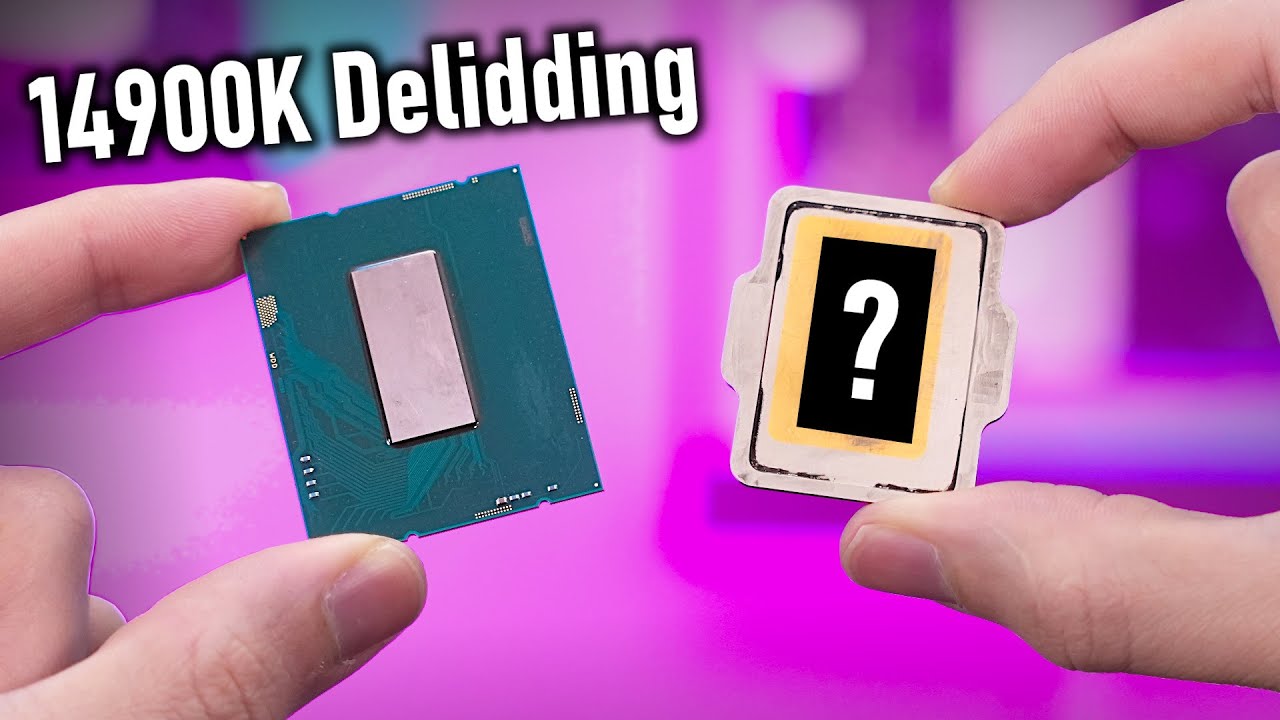When Jacob reviewed the Intel Core i9 14900K last week he wasn’t particularly impressed with the lack of improvements over the previous generation, and one thing that seems to have remained the same is the tendency to run on the warmer side under heavy load. Of course if you’re in the market for Intel’s latest and greatest you could always just do what the rest of us do and simply accept that the chip is well-within safe tolerances, or if you’re worried about heating up your case you could simply invest in a decent AIO to shift those pesky extra degrees back out into the big wide world.
If you’re Youtuber der8auer though, you might consider doing something drastic. While his channel covers all sorts of hardware breakdowns and analysis he often focuses on cooling solutions. One of the ultimate cooling solutions, and something of a dark art to the majority of us, remains the rather invasive process of “delidding”.
Delidding involves removing the factory fitted heat spreader fitted to the top of modern CPUs in order to gain direct access to the silicon die within, with the aim to either make direct cooler contact with the chip or to modify the heat spreader itself.
In the case of the Core i9 14900K, der8auer managed to achieve an impressive core temperature drop of up to 10ºC by removing the heat spreader, cleaning off the surfaces, and replacing the solder with a liquid metal alternative before popping the lid back on and running some tests. Later in the video he manages to increase the drop even further, shedding an extra 2ºC with the addition of a contact frame that distributes pressure more evenly across the surface of the modified IHS.
(Image credit: Future)
Best AIO cooler for CPUs: Keep your chip chill.
Best air cooler for CPUs: Classic, quiet cooling.
There’s no doubt that these drops are impressive, but it’s worth giving the full video a watch to see exactly how he achieves this result. While this method may actually be on the easier end of the scale when it comes to delidding, it’s difficult not to grit your teeth as you watch a man put a high-end piece of silicon in something resembling a modern-day CPU torture device and literally tighten the screws until it yields.
It’s certainly interesting to watch him simplify the process, but it’s difficult to think of delidding without flashbacks to the bad old days, where horrifying things could happen to the foolhardy and the poorly researched. Like this poor soul, who managed to rip an older chip clean off the die by forgetting to melt the solder first.
If you’re thinking of perhaps giving the delidding process a go yourself, may we kindly suggest that you, y’know, not. Unless you’re a professional like de8auer, in which case you already laugh in the face of fear, tweak the nose of terror, and are probably scoffing at this article as we speak. His website actually sells tools to supposedly make the process more foolproof, but I’m still not entirely convinced that this is a good idea for anyone but the most extreme overclockers with money to burn.










